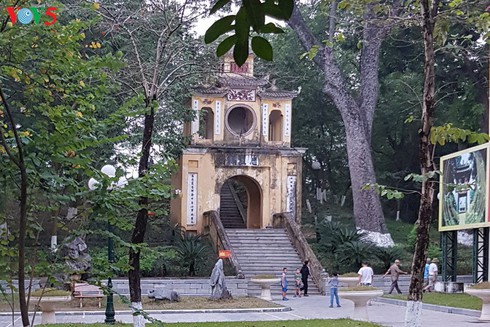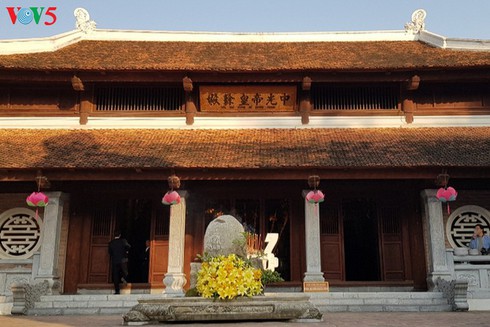 |
|
Dong Da Hil
|
In 2018, the Prime Minister officially recognized Dong Da Hill as a special national relic.
Dong Da Hill on Tay Son street, Dong Da district, has two gates: the main gate on Tay Son street and another on Dang Tien Dong street.
Vo Nguyen Phong, Chairman of Dong Da district’s People’s Committee, said “In 1962, Dong Da Hill was one of Hanoi’s first 12 sites recognized as national relics. On the 200th anniversary of the victory in 1989, the Dong Da Cultural Park was inaugurated, comprising the Dong Da Hill, a statue of Nguyen Hue − who was later proclaimed Emperor Quang Trung − an exhibition hall, and a yard. The complex has a total area of 22,000 square meters.”
Dong Da Hill, which was build up naturally centuries ago, guarded the western approach to Thang Long, the former name of Hanoi. At the top of the tree-dotted hill is a stone stele engraved with King Quang Trung’s proclamation. There is also a temple honoring martyrs and meritorious officials who rendered outstanding services to the nation. The temple has been mostly damaged, except for its entrance gate.
King Quang Trung’s statue was erected next to Dong Da Hill on the 200th anniversary of the Ngoc Hoi-Dong Da victory. The statue is 15 meters tall and weighs 200 tons. It is made of reinforced concrete, covered with marble and coated with bronze that resembles dragon’s scales. The statue is flanked by two delicately carved relievos, depicting the Tay Son troops’ advance at several points around Hanoi before their final victory in Dong Da.
Behind King Quang Trung’s statue is his temple. The two-storey building was built in 2010 on Hanoi’s millennial anniversary. His altar is placed on the upper storey, tiled with double roofs, while artifacts and photos of the Tay Son troops’ advance are displayed on the lower storey, where there are also exhibits introducing the Tay Son dynasty (1778-1802) and the Dong Da Hill festival.
The festival is held on the 5th day of the first lunar month to celebrate the historic triumph in 1789 which liberated the Thang Long capital city. The festival features an offering ritual, a palanquin parade, martial arts performances, folk games, and a recreation of the Ngoc Hoi-Dong Da battle. Hanoi authorities are preparing a dossier to be submitted to the Ministry of Culture, Sports, and Tourism to request recognition of the Dong Da Hill festival as a national intangible cultural heritage.
 |
|
King Quang Trung's temple
|
According to Associate Professor Doctor Dang Van Bai, former Director of the Cultural Heritage Department, the Dong Da Hill inspires patriotism in young people.
Bai said “A learning space can be created here, enabling students to learn history and interact with digital equipment. The Dong Da Hill festival should be leveled up to a national event, to promote its tourism potential.”
Hanoi authorities plan to upgrade the site and repair the damage. They will also gear up a communications campaign about Dong Da Hill and operate tours connecting it with other historical sites in Hanoi.
Associate Professor Doctor Duong Van Sau of Hanoi University of Culture told VOV “Dong Da Hill will prove its worth once it receives proper investment in upgrading and coordinated tourism services. It has areas for commemorations, rituals, and exhibits, but lacks places for tourism services and art performance, such as Tay Son martial arts and drums of war.”
Dong Da Hill may soon become a highlight of Hanoi tours.VOV5
 The historical site of Dong Da Hill in central Hanoi commemorates the Ngoc Hoi-Dong Da victory by Tay Son troops, led by Nguyen Hue, over the Qing forces in Spring of 1789.
The historical site of Dong Da Hill in central Hanoi commemorates the Ngoc Hoi-Dong Da victory by Tay Son troops, led by Nguyen Hue, over the Qing forces in Spring of 1789.